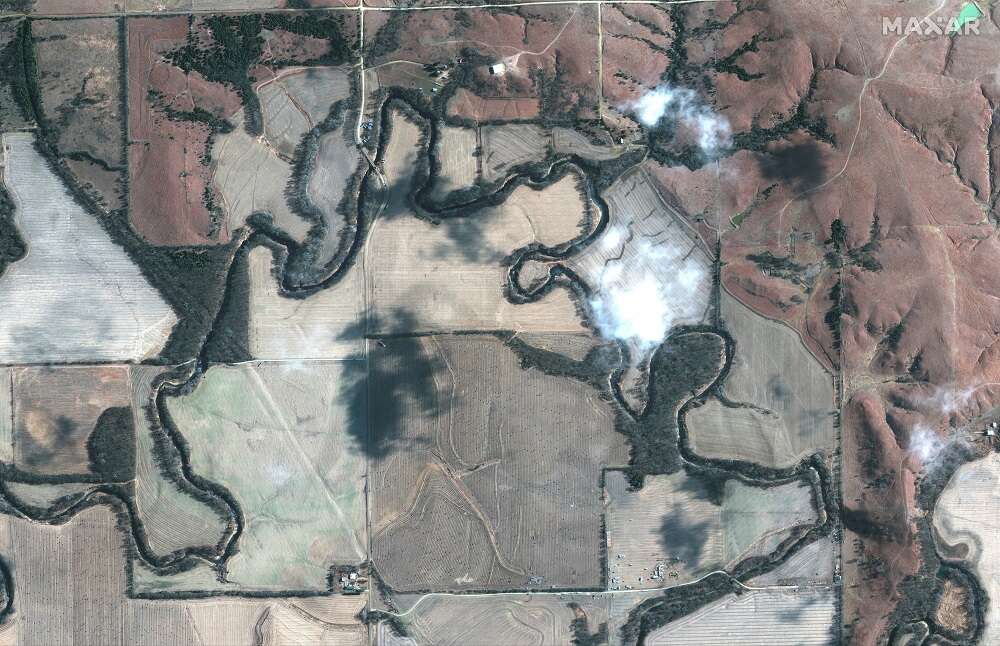
By Erwin Seba and Stephanie Kelly
WASHINGTON, Kan. (Reuters) -Traders expressed worry on Monday about how long Canada’s TC Energy Corp would take to clean up the largest U.S. crude oil spill in nearly a decade and restart its Keystone oil pipeline after more than 14,000 barrels of oil leaked last week.
TC Energy shut the pipeline after the spill was discovered on Wednesday in Kansas. The company told officials in Washington County, Kansas, on Monday that they have not yet determined the cause and that they started excavating around the pipeline.
TC Energy and the county officials met briefly Monday to discuss efforts to contain and clean up the spill, a company official said. The meeting was “uneventful,” lasting 13 minutes, said Dan Thalmann, owner of the Washington County News.
TC Energy provided no timeline on the cleanup, Thalmann said. The company told the county it was expanding efforts to vacuum oil from Mill Creek into trucks, he said.
Pictures of the site show a swath of oil that sprayed upward out of the pipeline onto a hillside. The oil spilled down a pasture north of Washington, Kansas, staining the grass, said Randy Hubbard, emergency preparedness coordinator for the county.
The Washington, Kansas, area includes farmers who raise grain, corn and cattle.
The affected segment of the line cannot resume operation until regulators approve a restart plan in its entirety, according to a U.S. Department of Transportation document.
TC Energy said on Sunday that it has more than 250 people working on the leak, including third-party environmental specialists. The U.S. Environmental Protection Agency (EPA) and pipeline regulator the Pipeline and Hazardous Materials Safety Administration (PHMSA) are also on the scene.
Additional EPA personnel will arrive to the scene to monitor the clean-up efforts, the EPA said on Monday.
MARKET WORRIES ABOUT SUPPLY
The 622,000 barrel-per-day Keystone line ships heavy Canadian crude from Alberta to U.S. refiners in the Midwest and the Gulf Coast. The shutdown is expected to hamper deliveries of Canadian crude both to the U.S. storage hub in Cushing, Oklahoma, and to the Gulf, where it is processed by refiners or exported.
“For the most part, there is concern in the trading community (the pipeline) is not up yet,” a U.S.-based dealer said.
If the outage lasts for more than 10 days, it could push Cushing, Oklahoma, storage levels to near the operational minimum of 20 million barrels, analysts said.
Concerns over the pipeline outage shrinking supplies at Cushing, also the delivery point for West Texas Intermediate crude futures (WTI), helped boost the U.S. benchmark by over 3% to about $73.50 in afternoon trade.
Prices for sour crude grades in the U.S. Gulf of Mexico were strengthening on Monday, as the shutdown means more demand for heavier Gulf barrels. Differentials at Magellan at East Houston and WTI Midland crude were weakening, keeping levels at Cushing stronger and exports weaker, one trader said.
Oil refiners could be forced to cut production rates by Christmas week if the pipeline does not restart by then, a crude analyst said. Refiners typically hold 10 days of crude supply on hand, the analyst added.
(Reporting by Stephanie Kelly and Erwin Seba; Additional reporting by Laila Kearney, Rod Nickel, Arathy Somasekhar and Nia Williams; Editing by Marguerita Choy and David Gregorio)


